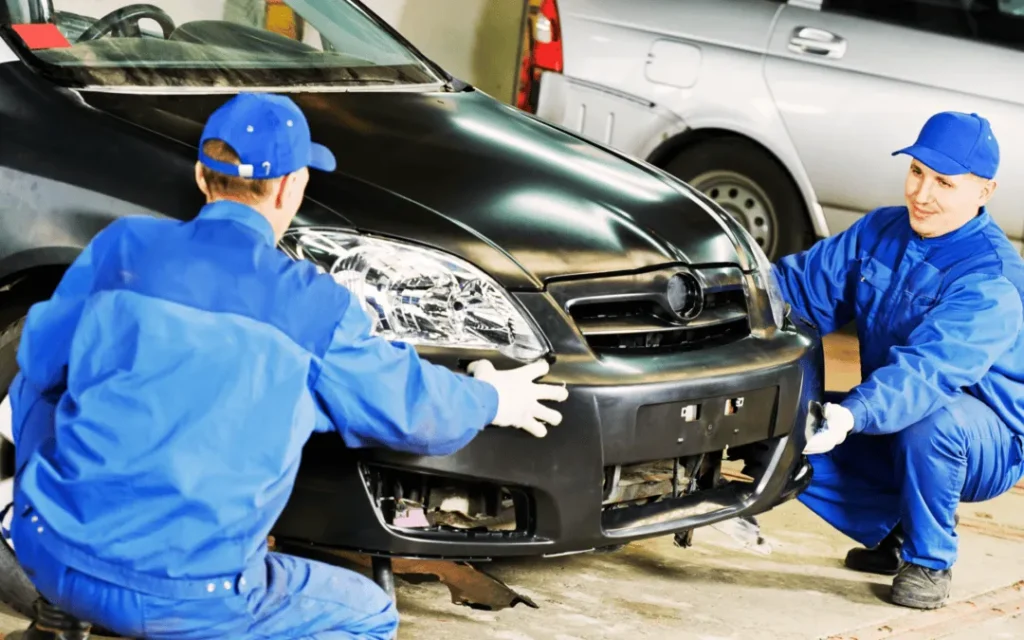The car body is more than just the outer shell of your vehicle; it’s your car’s first line of defense against the elements and collisions. Over time, even the most careful drivers will see some wear and tear on their car’s exterior. Whether it’s minor scratches from everyday use or more significant damage from an accident, keeping your car body in top condition requires regular maintenance and a bit of know-how. This guide will walk you through everything you need to know about car body maintenance, helping you keep your vehicle looking new and performing well.
Why Car Body Maintenance Matters
The car body protects the internal components and the occupants inside. Regular maintenance not only enhances the vehicle’s appearance but also maintains its structural integrity, which is crucial for safety. A well-maintained car body also helps retain the vehicle’s resale value, making it a worthwhile investment in the long run.
Common Causes of Car Body Damage
- Accidents: Even minor fender benders can cause significant damage. Scratches, dents, and misalignment can occur, affecting both aesthetics and functionality.
- Weather: Sun, rain, snow, and hail can all take a toll on your car’s exterior. UV rays can fade paint, while moisture can lead to rust and corrosion.
- Wear and Tear: Everyday use can lead to scratches, dents, and rust. Parking lot dings, road debris, and other minor impacts contribute to the gradual degradation of your car’s exterior.
Regular Car Washing and Waxing
The Benefits of Regular Washing
Washing your car regularly removes dirt, grime, and other contaminants that can damage the paint. Dirt can act like sandpaper, wearing down the paint over time. Aim to wash your car at least once a week to keep it looking fresh and to maintain the integrity of the paintwork.
How to Wash Your Car Properly
- Use the Right Products: Avoid household detergents that can strip the paint. Use car-specific soaps and a soft sponge or mitt to gently clean the surface.
- Rinse Thoroughly: Make sure to rinse your car thoroughly before and after washing to prevent soap residue from dulling the finish. Rinse from the top down to avoid re-soiling clean areas.
Waxing Your Car
Waxing provides a protective layer that helps preserve the paint. Wax your car every three months to maintain a glossy finish and protect against UV rays and moisture. Use a high-quality car wax and follow the manufacturer’s instructions for the best results.
Dealing with Scratches and Dents
Minor Scratches
Minor scratches can often be polished out. Use a high-quality car polish and a soft cloth to buff out small scratches. Apply the polish in a circular motion and wipe off any excess with a clean, dry cloth. For deeper scratches, touch-up paint that matches your car’s color can be used.
Dealing with Dents
For minor dents, a dent repair kit can be a quick and affordable solution. These kits use suction or specialized tools to pull the dent back into place. For more significant damage, professional repair may be necessary. Dent removal specialists use advanced techniques like paintless dent repair (PDR) to fix dents without damaging the paint.
Preventing Rust
What Causes Rust?
Rust forms when metal is exposed to moisture and oxygen over time. Salt from roads in winter can accelerate this process. Rust can weaken the car body and lead to more severe structural issues if not addressed.
How to Prevent Rust
- Keep Your Car Clean and Dry: Regular washing helps remove salt and moisture that can cause rust. Pay extra attention to the undercarriage and wheel wells where salt accumulates.
- Apply Rustproofing: Consider applying a rustproofing product to vulnerable areas like the undercarriage. Rustproofing sprays and treatments can provide an additional layer of protection against moisture and salt.
Protecting Your Car from the Elements
Sun Protection
The sun’s UV rays can fade and damage your car’s paint. Use a car cover or park in the shade whenever possible to protect your car from prolonged sun exposure. Window tints and UV-protective films can also help reduce the effects of UV rays.
Weather Protection
During winter, wash your car frequently to remove salt and road grime that can lead to rust. In summer, protect the paint from bird droppings and tree sap, which can be highly corrosive. A good car wax or sealant can provide a protective barrier against these elements.
Using Paint Sealants and Protective Films
Paint Sealants
Paint sealants provide a longer-lasting protective layer than traditional wax. They are synthetic and can last up to six months. Apply sealants in a clean, shaded area, and follow the manufacturer’s instructions for the best results.
Protective Films
Protective films, or clear bras, are transparent films applied to the car’s body to protect against scratches, chips, and minor abrasions. These films are particularly useful for high-impact areas like the front bumper, hood, and side mirrors. They are nearly invisible and can significantly extend the life of your car’s paint.
Professional Car Detailing
What is Car Detailing?
Car detailing goes beyond a regular wash. It involves a thorough cleaning, restoration, and finishing of the car, both inside and out. Detailing can include polishing, waxing, interior cleaning, and minor paint touch-ups.
Benefits of Professional Detailing
Professional detailing can remove stubborn contaminants, restore the paint, and apply high-quality protective coatings. Regular detailing can keep your car looking new, enhance its resale value, and protect it from environmental damage.
Repairing Major Damage
When to Seek Professional Help
For significant damage such as deep scratches, large dents, or severe rust, professional repair is recommended. Attempting to fix these issues yourself can sometimes make them worse. Body shops have the tools and expertise to restore your car to its original condition.
Choosing a Body Shop
When choosing a body shop, look for one with good reviews, proper certifications, and a warranty on their work. Ask for estimates from multiple shops to ensure you get a fair price.
Preventive Measures
Regularly Updating Passwords
Although more related to car security than body maintenance, keeping your car’s security system updated can prevent unauthorized access and potential vandalism.
Monitoring Account Activity
If your car is connected to a mobile app, regularly monitor activity for any unusual behavior. This can help prevent issues like tampering or unauthorized access.
Periodic Cleanup of Emails
Keep your inbox organized and free from clutter by deleting old emails and managing subscriptions. This helps you stay on top of important maintenance reminders and updates from your car manufacturer.
When to Seek Professional Help
Signs You Need Expert Assistance
If you’ve tried all troubleshooting steps and the problem persists, it might be time to seek professional help. Persistent rust, deep scratches, and complex dents usually require expert attention.
Finding a Reliable IT Support Service
For car maintenance, this translates to finding a reliable auto body repair shop or detailing service. Look for services with good reviews, appropriate certifications, and a track record of quality work.
Conclusion
Maintaining the body of your car is essential not just for its aesthetic appeal but also for its longevity and safety. Regular washing and waxing, prompt attention to scratches and dents, and preventive measures against rust and weather damage can keep your vehicle looking new and performing well. Investing time in car body maintenance saves you money in the long run and ensures that your vehicle remains reliable and safe.







